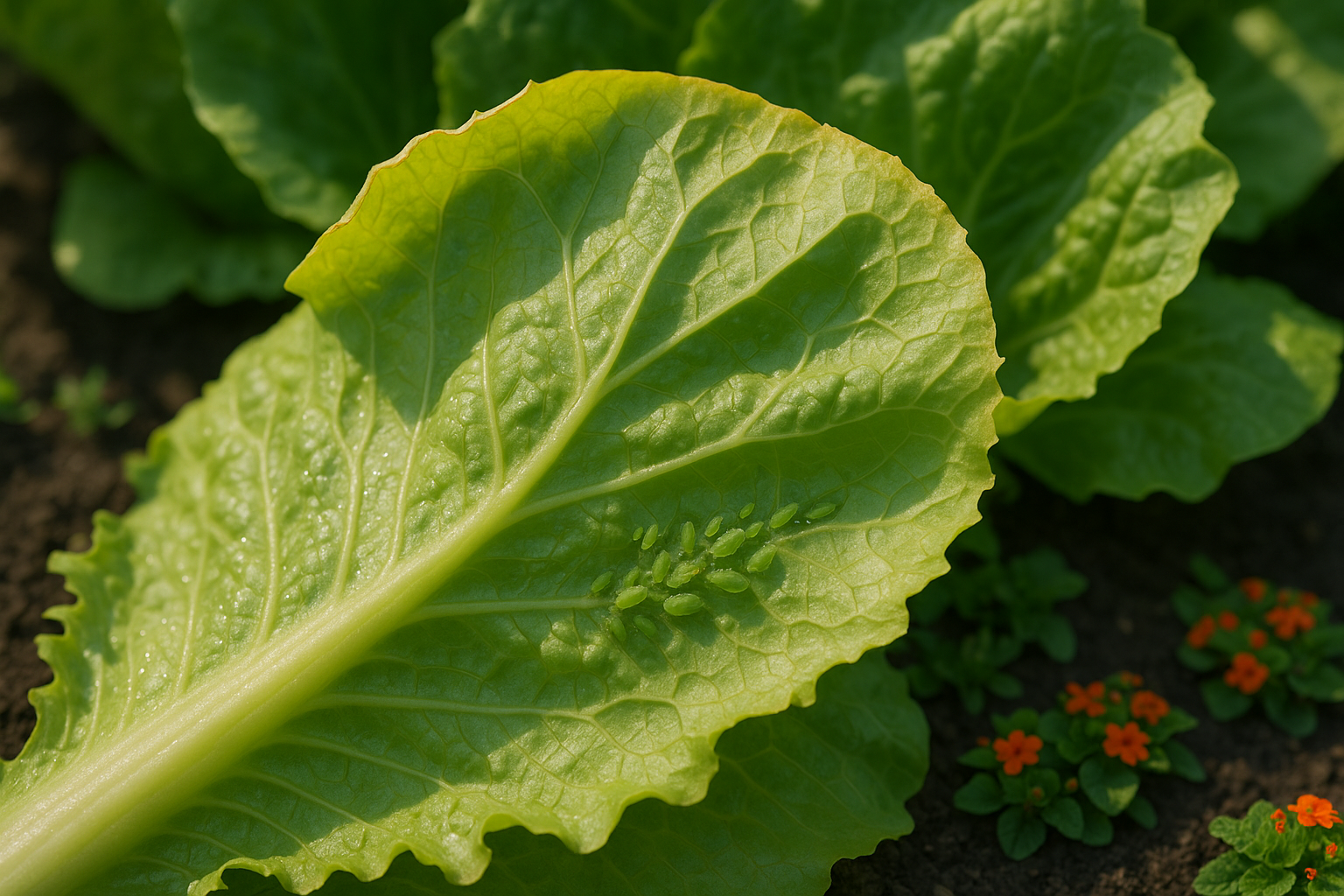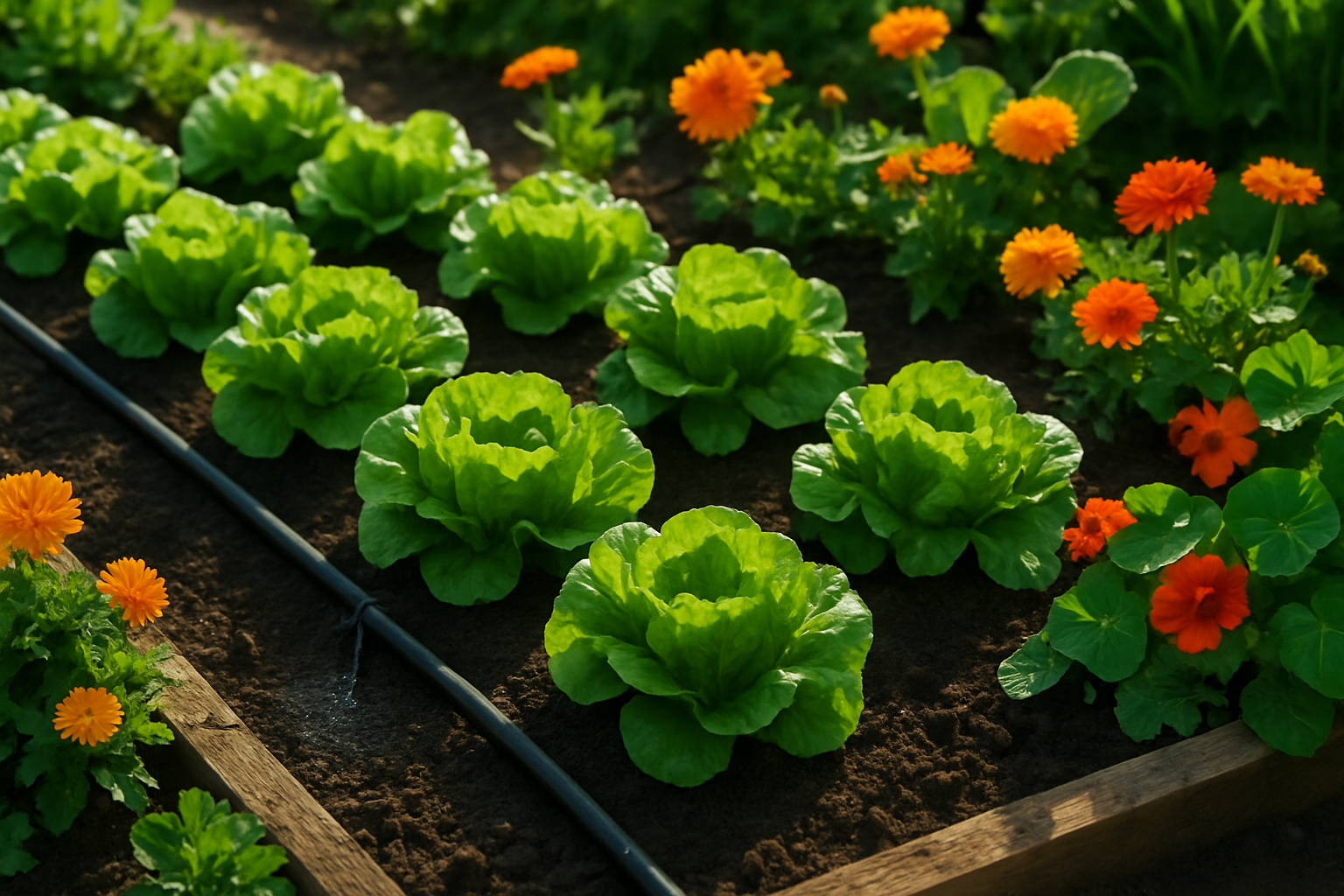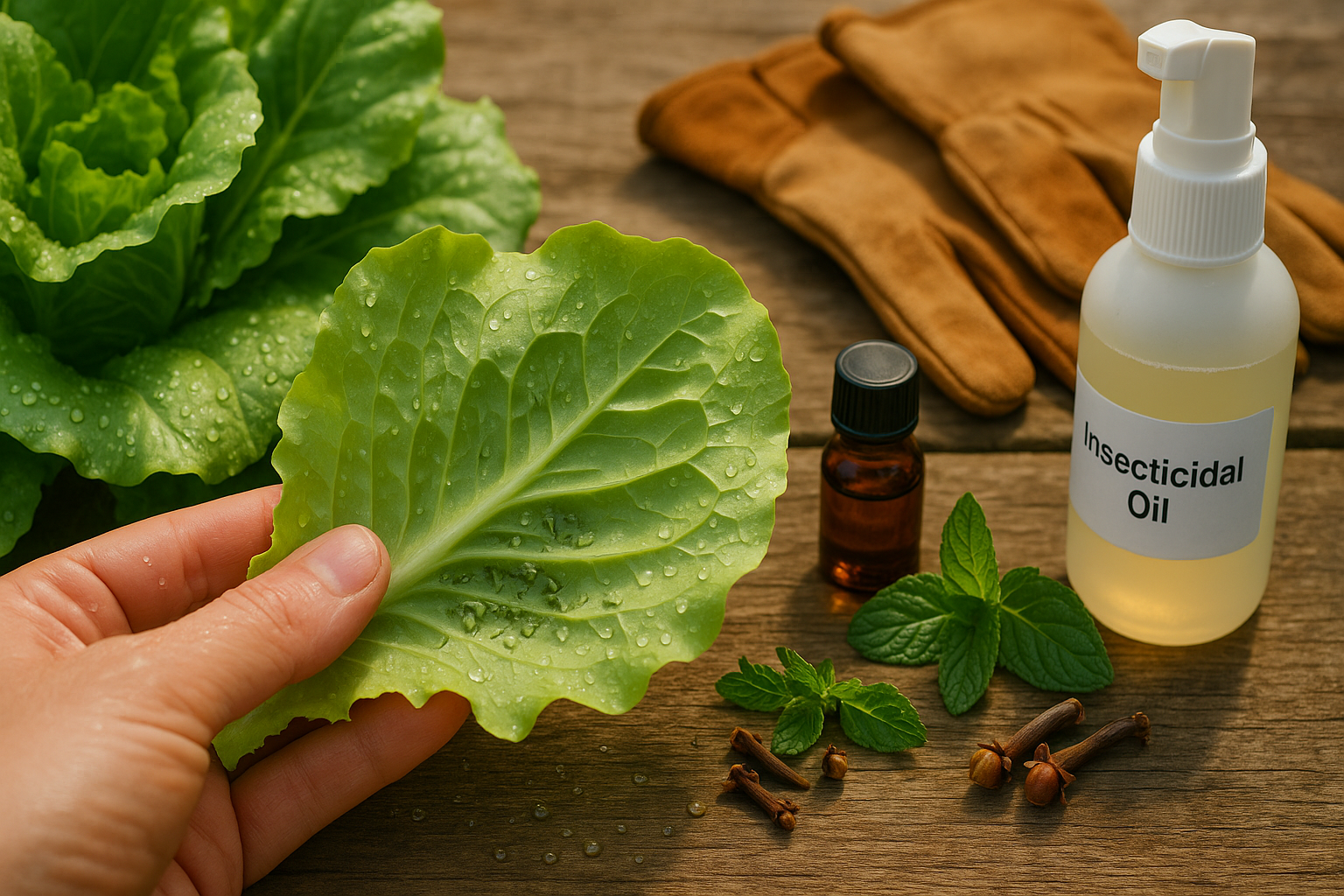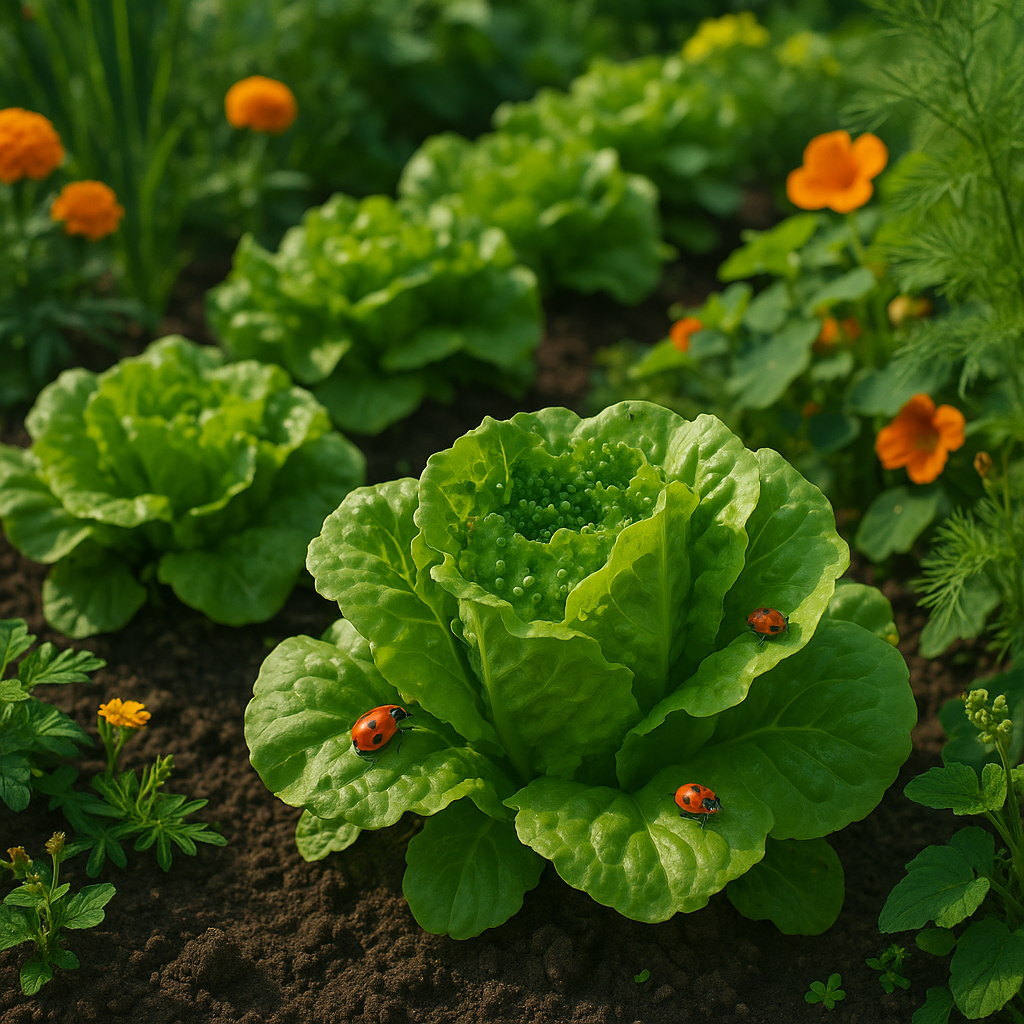Understanding Aphids on Lettuce
Aphids are small, soft-bodied insects notorious for being pests in vegetable gardens, especially targeting tender crops like lettuce. The green peach aphid and the lettuce root aphid are among the most common aphids found on lettuce.
These pests reproduce quickly, particularly in mild, humid weather. Females often give birth to live young, allowing populations to explode within just a few days. Aphids feed by piercing the soft leaf tissue and sucking out plant juices. This weakens the lettuce and can cause yellowing, curling, and stunted growth.
Even a mild infestation can deform lettuce heads, while heavy infestations may make entire crops unfit for sale or consumption. More concerningly, aphids leave behind sticky honeydew that attracts mold and promotes the spread of plant diseases. This is why controlling aphid populations is crucial for lettuce growers.
For those producing lettuce for fresh consumption, organic control methods are especially important. Chemical pesticides can leave harmful residues on delicate greens, posing health risks to consumers and disrupting the garden ecosystem. Instead, natural methods such as introducing ladybugs, spraying with neem oil, or practicing crop rotation can keep aphids in check while ensuring lettuce remains safe and healthy to eat.
Recognizing Aphid Infestations

Spotting an aphid infestation early can save your lettuce plants from serious damage. Start by inspecting the newest, most tender growth—aphids love to hide on the undersides of leaves and around young shoots where they can easily suck sap.
Look for telltale symptoms like yellowing or curling leaves, as these are often the first visible signs of trouble. Another giveaway is a shiny, sticky substance called honeydew left behind by aphids as they feed; this can make leaves look glossy and may attract ants. If you notice a trail of ants on your lettuce, that’s a red flag since they “farm” aphids for their sweet honeydew.
You might also see the tiny insects themselves: green, black, or grayish clusters that move slowly or not at all, clinging to stems and leaf veins.
Don’t overlook secondary problems either; aphids can spread plant diseases, leading to spotted, malformed leaves or a general decline in your lettuce’s vigor. If you spot new growth that’s smaller than usual or see entire patches stunted, aphid activity could be the culprit.
Taking a close look every few days, especially during warm weather, helps catch infestations before they get out of hand.
Best Organic Prevention Strategies

Keeping aphids out of your garden starts with deterring them in the first place, which means making your garden less appealing to them. Healthy soil is the foundation—regularly add compost to boost nutrients and help your plants grow stronger and more resistant to pests. Don’t overcrowd your beds; proper spacing improves air circulation, making it harder for aphids to settle in and reducing plant stress.
Water your plants early in the day using a soaker hose or drip irrigation at the base. This method discourages aphids and keeps foliage dry. Crop rotation is another simple but powerful strategy: by switching up what you plant in each bed every year, you disrupt the aphid life cycle and prevent infestations from building up.
Stay diligent about weeding, too—aphids often hide on weeds and spread quickly if left unchecked. Finally, embrace companion planting. Adding marigolds, chives, garlic, or nasturtiums around your veggies can naturally repel aphids. For example, planting nasturtiums near beans or tomatoes draws aphids away from your main crops, while aromatic herbs like basil help mask your plants’ scent.
These small, organic steps—combined—make your garden a far less welcoming place for aphids.
Natural Methods to Remove Aphids

Natural methods for removing aphids are both safe and effective, especially if you catch infestations early. If you only see a few aphids, try manual control—simply pinch or brush them off stems and leaves with your fingers, or use a strong burst of water from a garden hose.
Focus on the undersides of leaves where aphids often hide, and repeat every few days until the population drops. For a slightly larger infestation, homemade sprays can offer a gentle but powerful solution.
A classic is mild soapy water—mix a tablespoon of pure, fragrance-free liquid soap (like Castile soap) into a quart of water, then spritz it onto affected plants. Be sure to coat all surfaces, but avoid spraying during the hottest part of the day to prevent leaf burn.
You can also add a few drops of peppermint or clove essential oil for extra insect-repellent power, but always test sprays on a small leaf first to check for sensitivity.
When aphids are stubborn, turn to organic, ready-to-use products like neem oil or insecticidal soap. These are widely available at garden centers and are safe for most beneficial insects.
Apply neem oil early in the morning or late in the evening, coating the plant thoroughly; repeat weekly if needed, following label instructions. Insecticidal soap works much like soapy water but is specially formulated to target pests with minimal harm to your plants or the environment.
With patience and a consistent approach, you can manage aphids without harsh chemicals.
Harnessing Natural Predators and Beneficial Insects
Combating aphids in your garden doesn’t require harsh chemicals—natural predators and beneficial insects can help keep aphid populations in check, offering an eco-friendly solution. Ladybugs are famous aphid eaters, devouring up to 50 aphids a day. You can buy live ladybugs online or at garden centers, or attract them by planting dill, fennel, or marigolds.
Lacewings are another powerful ally—both adults and larvae feast on aphids—and they’re drawn to plants with abundant pollen, like cosmos and sunflowers. Hoverflies, which resemble small bees, also lay eggs near aphid colonies; their larvae feed voraciously on aphids.
To make your garden a haven for these helpful insects, plant a diverse mix of flowers, herbs, and native plants to provide continuous blooms and shelter. Installing insect hotels—a bundle of hollow stems or wood with holes—offers additional nesting spots for lacewings and ladybugs, encouraging them to stick around.
By investing a bit of time into creating welcoming habitats, you’ll enjoy ongoing, chemical-free aphid control as these hardworking insects establish themselves year after year. This natural approach not only protects your plants but also supports a healthier ecosystem in your backyard.
Long-Term Maintenance and Monitoring
Regular garden inspections are your first line of defense against aphid infestations. Spending just a few minutes each week checking the undersides of leaves and growing tips helps you catch problems before they spread. Early detection allows you to tackle issues quickly with a blast of water or a targeted application of organic sprays like neem oil or insecticidal soap.
To prevent resistance, rotate these treatments instead of relying on just one. Healthy plants also withstand aphids better, so keep up with feeding, watering, and pruning as needed.
It’s also smart to keep a simple garden journal—note when and where aphids appear, which treatments work best, and when outbreaks tend to occur. These records make it much easier to predict and prevent future problems, saving you time and stress every growing season.
Summary and Key Takeaways
Organic, proactive management of aphids in lettuce gardens is essential for maintaining healthy crops while minimizing chemical use. By combining preventative measures—such as crop rotation, attracting beneficial insects, and maintaining good garden hygiene—with natural treatments like neem oil or insecticidal soap, you create a more balanced and resilient ecosystem.
Regularly inspecting your plants for signs of pests allows you to catch problems early before they escalate. Remember, a healthy, diverse garden is your best defense against aphids. Encourage plant variety and support pollinators to ensure ongoing protection and stronger lettuce harvests throughout the season.
